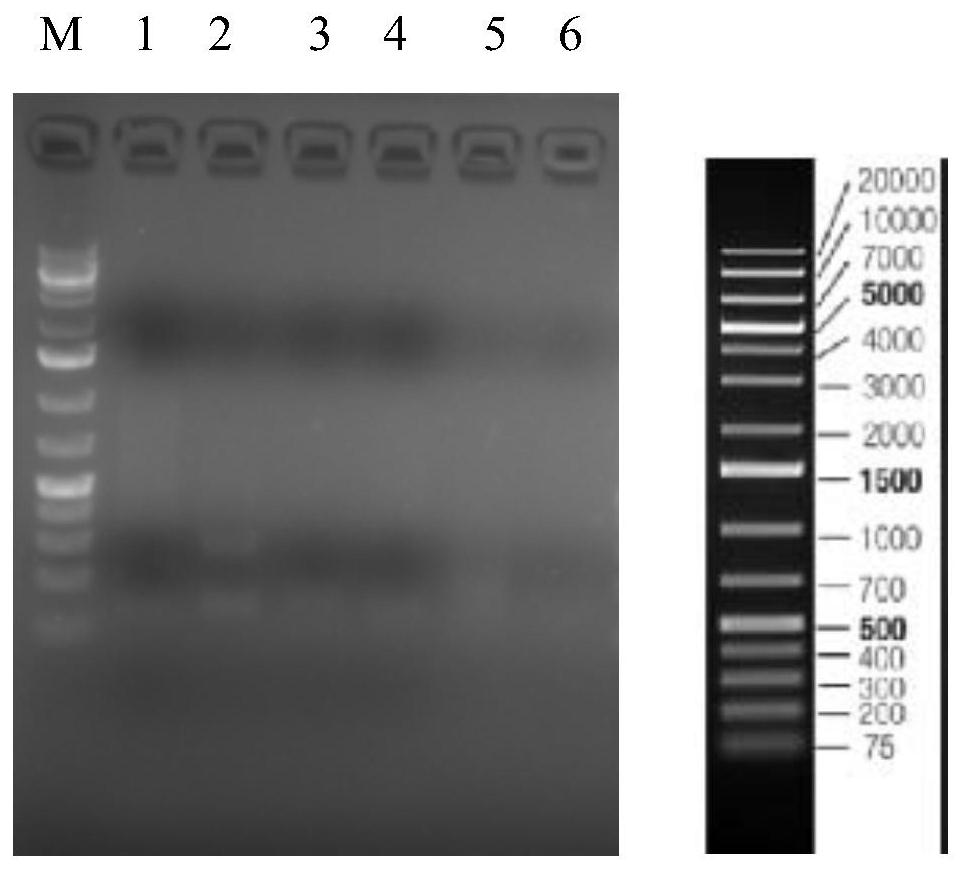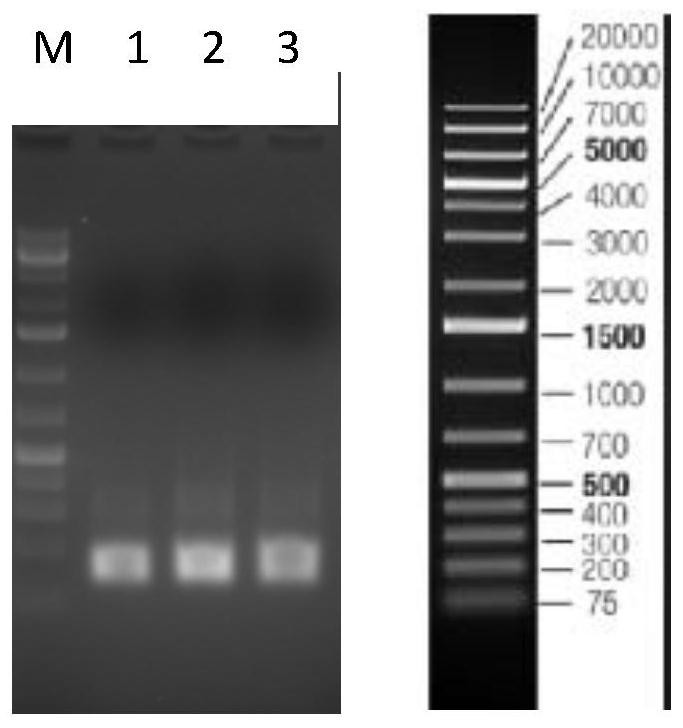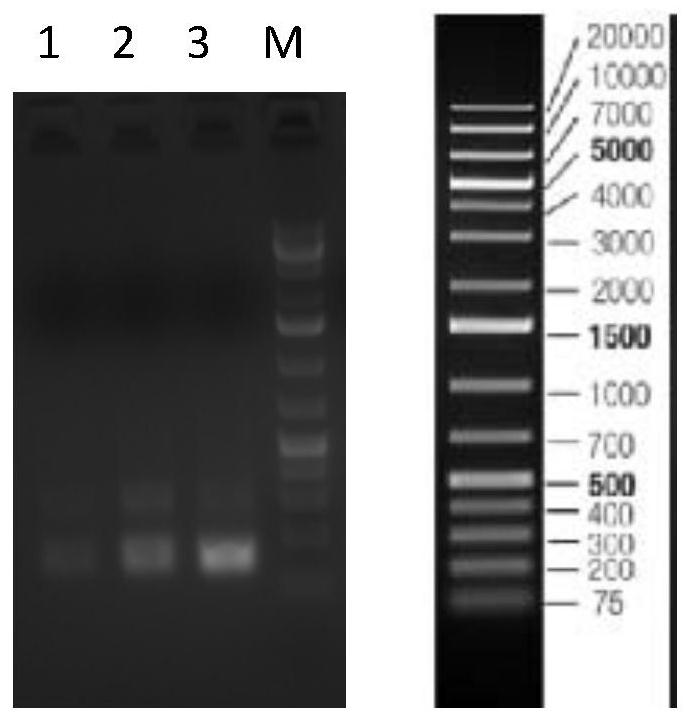CRISPR (Clustered Regularly Interspaced Short Palindromic Repeats) reagent for detecting 2019-nCov and application of CRISPR reagent
A 2019-ncov, reagent technology, applied in the field of medical diagnosis, which can solve the problems of sample contamination and complicated operation
- Summary
- Abstract
- Description
- Claims
- Application Information
AI Technical Summary
Problems solved by technology
Method used
Image
Examples
Embodiment 1
[0054] Example 1: Screening of CRISPR reagents for detection of 2019-nCov
[0055] Screen a set of CRISPR reagents for the detection of 2019-nCov, including amplification primer pairs and crRNA; and optimize the reagent volume of the entire detection system to obtain the best detection results in the shortest time.
[0056] experimental method:
[0057] 1. Through RPA amplification, agarose gel electrophoresis screening for amplification primer pairs with high efficiency.
[0058] 1. Two pairs of primers were designed for the nucleoprotein gene N of COVID-2019:
[0059] (1) N1 primer pair:
[0060] RPA-N1F: gaaatTAATACGACTCACTATAgggAAATTTCAAAGATCAAGTCATTTTGCTGAATA (SEQ ID No: 1), wherein, the lowercase letters and the sequence between them are the T7 sequence, and the rest of the sequence is the forward primer sequence of the targeting sequence.
[0061] RPA-N1R: TTTCATCAGCCTTCTTCTTTTTGTCCTTTTTA (SEQ ID No: 2).
[0062] Its targeting sequence is:
[0063] AAATTTCAAAGATCAA...
Embodiment 2
[0170] Embodiment 2: preparation contains nCov-N, the pseudovirus plent-N of nCov-S, plent-S
[0171] 1. Construction of lentiviral vector
[0172] 1. Primer design
[0173] Table 10 Primer Sequence
[0174]
[0175]
[0176] 2. Experimental process
[0177] 1), PCR
[0178] Centrifuge briefly after receiving the primers, and add (nmol number*10) μL H 2 O, diluted to 100 μM mother solution, then transferred to a 1.5mL centrifuge tube, diluted 10 times to become PCR working solution.
[0179] PCR system: (unit: μL)
[0180] Table 11: PCR system
[0181]
[0182] Primers and templates correspond as follows:
[0183] Table 12: Primers, Templates
[0184]
[0185] Reaction procedure:
[0186] Table 13: Reaction Program
[0187]
[0188] After the PCR reaction, 2 μL of the PCR product was separated and detected by 1% agarose gel electrophoresis. If the size of the target band was correct, the PCR product was purified using a DNA purification kit.
[0189] ...
PUM
 Login to View More
Login to View More Abstract
Description
Claims
Application Information
 Login to View More
Login to View More - R&D
- Intellectual Property
- Life Sciences
- Materials
- Tech Scout
- Unparalleled Data Quality
- Higher Quality Content
- 60% Fewer Hallucinations
Browse by: Latest US Patents, China's latest patents, Technical Efficacy Thesaurus, Application Domain, Technology Topic, Popular Technical Reports.
© 2025 PatSnap. All rights reserved.Legal|Privacy policy|Modern Slavery Act Transparency Statement|Sitemap|About US| Contact US: help@patsnap.com



